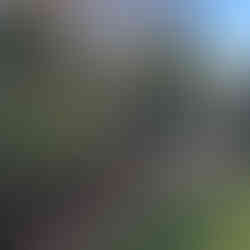Native Plants: Paring the Lawn and Scaling the Plants
- Nuts for Natives
- Mar 19, 2020
- 2 min read
Updated: Mar 5, 2021

If you have an inkling to follow Doug Tallamy’s advice to reduce your lawn by half to greatly improve the ecological value of your garden, yet are looking out at an expanse of grass, it might seem challenging. This really is a case of every little bit helps though. A recent post covers several ways to pare the lawn: plant under existing trees, create a new bed or enlarge an existing garden bed.
We live on a 1/8 acre lot and, while we converted almost half our lawn to trees, shrubs and perennials, we did it over 7 years, a bit at a time. This could also have been done in one season. Choices!
Create garden beds under trees and connect beds
Two ornamental kousa dogwoods stood at the front of the garden in a shady spot. We added a native dogwood (Cornus Florida) to make a trio. As we did that, we expanded and connected the bed beneath the trees and planted perennials such as heuchera (Heuchera Americana) and carex (Carex laxiculmis), small inkberry (Ilex glabra) shrubs and stonecrop (Sedum ternatum) as groundcover.
Expanding an existing garden bed
This sunny corner had several ornamental trees and perennials. Over time, we added evergreens including American holly (Ilex opaca), the northern white cedar (Thuja occidentalis) and two inkberries (Ilex glabra) to begin to screen the intersection as well as 5 winterberry (Ilex verticillata) shrubs for bright red berries in winter. Next we added native viburnum (Viburnum nudum) and red twig dogwoods (Cornus sericea) between the American hollies. Most recently we added a large serviceberry shrub which will provide white blooms in spring with berries to follow and gold color in fall. The number of trees added really illustrates Doug Tallamy’s point that most gardens have room for more trees and shrubs than we think.
The front of the bed is planted with smaller perennials such as heuchera (Heuchera Americana), penstemon (Penstemon digitalis), bee balm (Monarda), baptisia (Baptisia australis) and three dwarf thujas (Thuja occidentalis).
Create a New Garden Bed
This side yard was virtually a blank slate. Because of the 8′ change in grade, we hired a contractor to create a terrace with short stone walls at the top and bottom and steps through it. We planted Virginia blue bells (Mertensia virginica) and Celandine poppies (Stylophorum diphyllum) for spring color, coneflowers (Echinacea purpurea) and butterfly weed (Asclepias tuberosa) for summer color and Christmas ferns (Polystichum acrostichiodes) for winter interest. We added these gradually and then expanded the side beds as well.
You may want to do more, sooner. Whether you choose fast or slow, a series of small changes really add up over time. One of life’s truisms!
For more info:
A great step by step account from the Virginia Native Plant Society shows how two homeowners transitioned from a traditional to a native landscape.
A video (same one as last week) on how to remove lawn quickly:
How to remove grass the no dig, no till method from the University of Maryland Extension Service. It takes longer but is easier.



























Comments